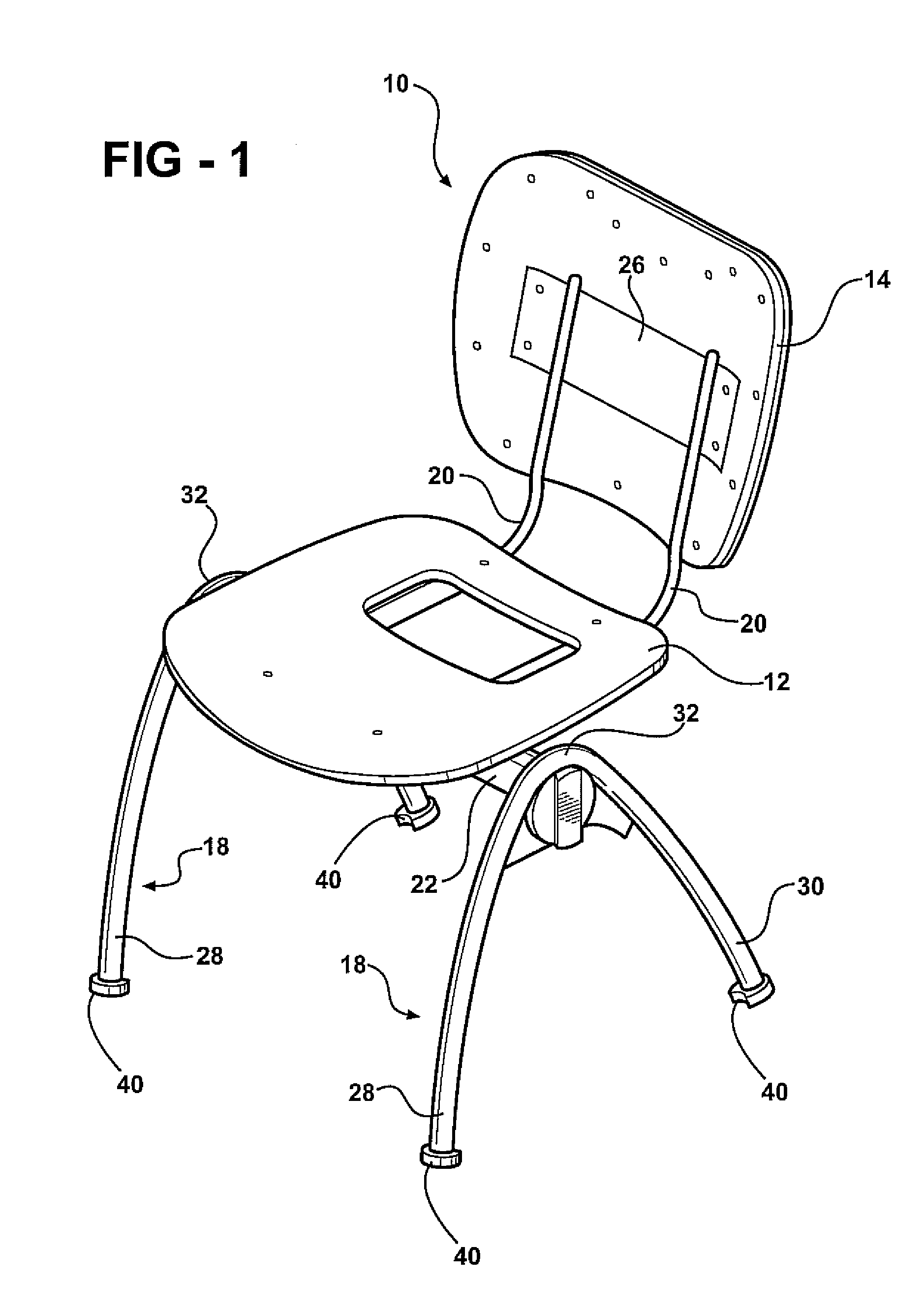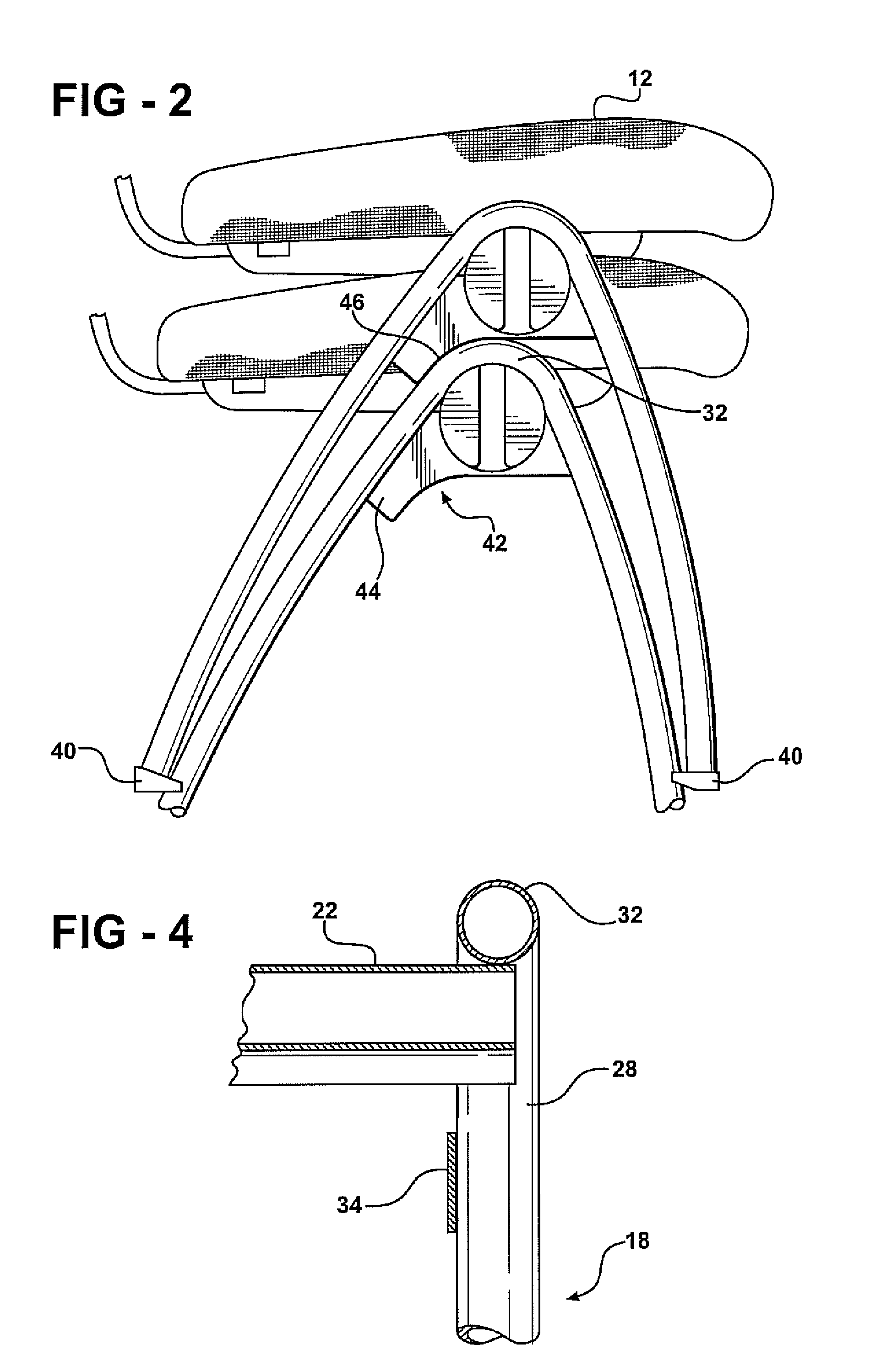Stackable chair
a stacking chair and seat technology, applied in the field of stacking chairs, can solve the problems of unstable and over-compensated stacking chairs, and achieve the effect of preventing the stack from leaning forward and providing for the stability of the stacking chair
- Summary
- Abstract
- Description
- Claims
- Application Information
AI Technical Summary
Benefits of technology
Problems solved by technology
Method used
Image
Examples
Embodiment Construction
[0015]Referring to the Figures, wherein like numerals indicate corresponding parts throughout the several views, a stacking chair 10 is provided: FIG. 1 illustrates a stacking chair 10 according to an embodiment of the present invention. The stacking chair 10 is designed such that multiple chairs of the same likeness may be stacked one atop another for storage or transportation, as shown in FIG. 2. Additionally, the chair is equipped with features which allow for the chairs to be interconnected with similarly equipped chairs in a side-by-side relationship. The stacking chair 10 includes a seat 12, a back support 14, and a frame 16.
[0016]With reference now to FIGS. 3a and 3b, the frame 16 includes a pair of leg members 18, a back support member 20, and a seat support member 22. Each leg member 18 generally has the shape of an inverted U or inverted V and is symmetric to the other. The leg members 18 and are shaped such that the leg members 18 of an upper chair of the same likeness ma...
PUM
 Login to View More
Login to View More Abstract
Description
Claims
Application Information
 Login to View More
Login to View More - R&D
- Intellectual Property
- Life Sciences
- Materials
- Tech Scout
- Unparalleled Data Quality
- Higher Quality Content
- 60% Fewer Hallucinations
Browse by: Latest US Patents, China's latest patents, Technical Efficacy Thesaurus, Application Domain, Technology Topic, Popular Technical Reports.
© 2025 PatSnap. All rights reserved.Legal|Privacy policy|Modern Slavery Act Transparency Statement|Sitemap|About US| Contact US: help@patsnap.com



